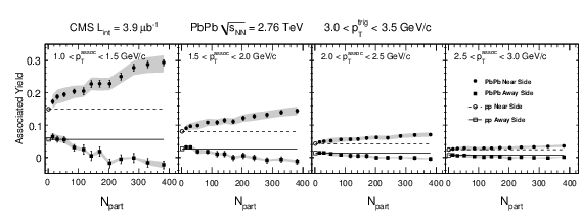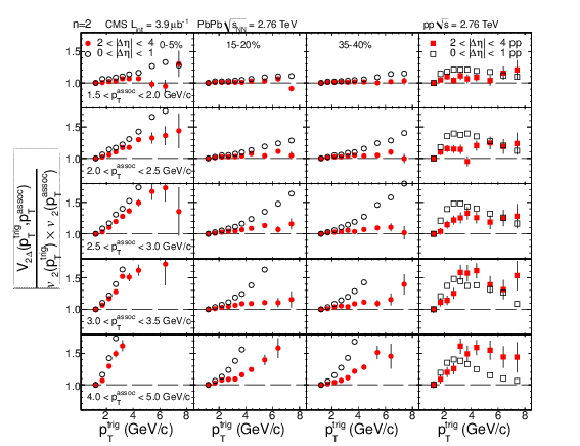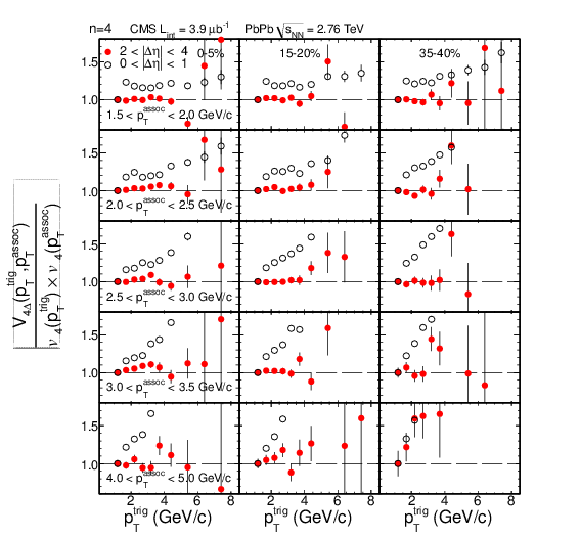

Compact Muon Solenoid
LHC, CERN
| CMS-HIN-11-006 ; CERN-PH-EP-2011-222 | ||
| Centrality dependence of dihadron correlations and azimuthal anisotropy harmonics in PbPb collisions at $\sqrt{s_{NN}}$ = 2.76 TeV | ||
| CMS Collaboration | ||
| 16 January 2012 | ||
| Eur. Phys. J. C 72 (2012) 2012 | ||
| Abstract: Measurements from the CMS experiment at the LHC of dihadron correlations for charged particles produced in PbPb collisions at a nucleon-nucleon centre-of-mass energy of 2.76 TeV are presented. The results are reported as a function of the particle transverse momenta (pt) and collision centrality over a broad range in relative pseudorapidity [Delta(eta)] and the full range of relative azimuthal angle [Delta(phi)]. The observed two-dimensional correlation structure in Delta(eta) and Delta(phi) is characterised by a narrow peak at Delta(eta), Delta(phi) approximately (0, 0) from jet-like correlations and a long-range structure that persists up to at least |Delta(eta)| = 4. An enhancement of the magnitude of the short-range jet peak is observed with increasing centrality, especially for particles of pt around 1-2 GeV/c. The long-range azimuthal dihadron correlations are extensively studied using a Fourier decomposition analysis. The extracted Fourier coefficients are found to factorise into a product of single-particle azimuthal anisotropies up to pt approximately 3-3.5 GeV/c for at least one particle from each pair, except for the second-order harmonics in the most central PbPb events. Various orders of the single-particle azimuthal anisotropy harmonics are extracted for associated particle pt of 1-3 GeV/c, as a function of the trigger particle pt up to 20 GeV/c and over the full centrality range. | ||
| Links: e-print arXiv:1201.3158 [nucl-ex] (PDF) ; CDS record ; inSPIRE record ; Public twiki page ; CADI line (restricted) ; | ||
| Figures | |

png pdf |
Figure 1:
|

png pdf |
Figure 2:
|

png pdf |
Figure 3:
|

png pdf |
Figure 4:
|

png pdf |
Figure 5:
|

png pdf |
Figure 6:
|

png pdf |
Figure 7:
|

png pdf |
Figure 8:
|

png pdf |
Figure 9:
|

png pdf |
Figure 10:
|

|
Compact Muon Solenoid LHC, CERN |

|

|

|

|

|

|